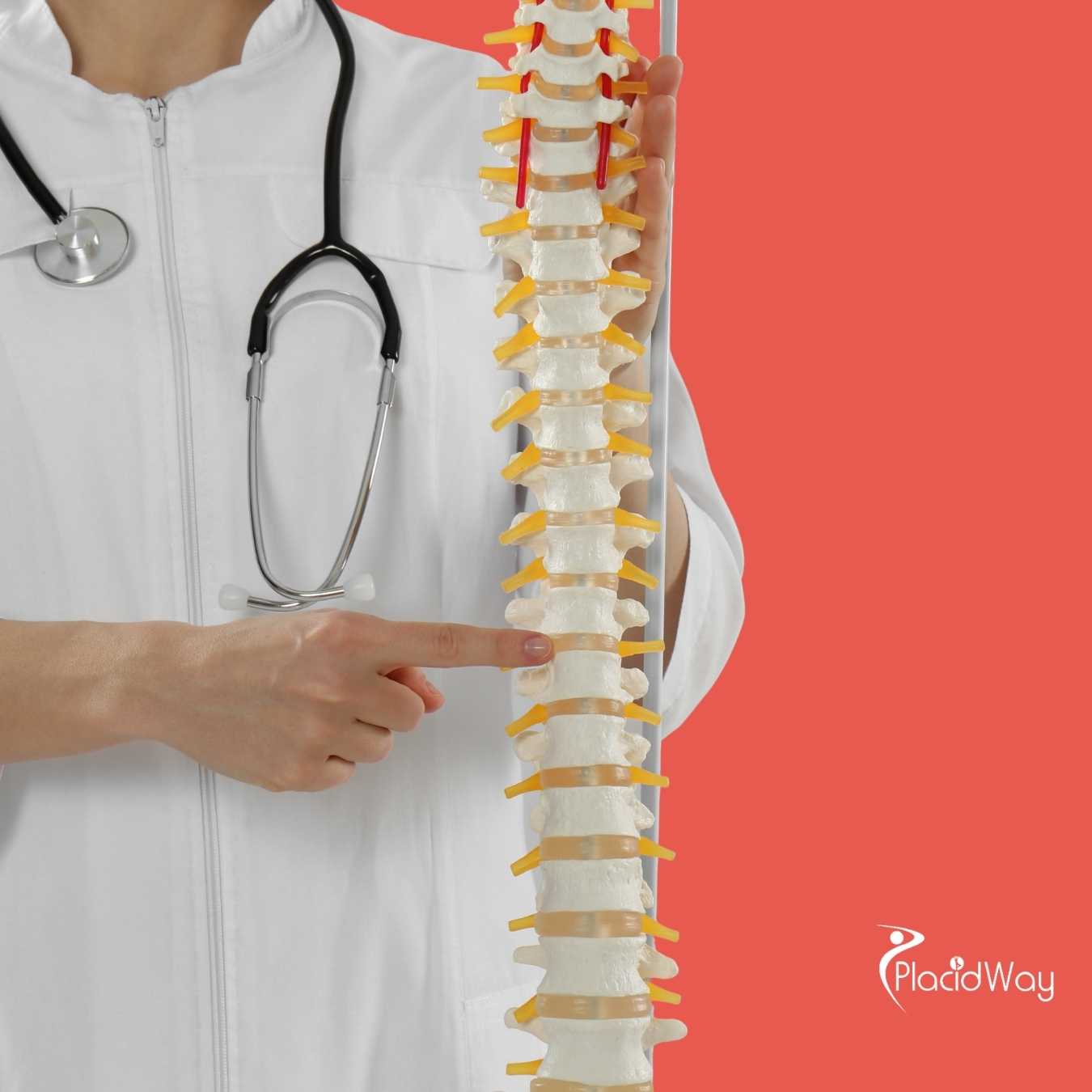Stem Cell Therapy for Knee Arthritis: Prices, Options, and Results
.png)
If you're dealing with the persistent pain and stiffness of knee arthritis, you've likely explored various treatment options. Among the newer, innovative approaches gaining attention is stem cell therapy. This treatment offers a promising alternative for those looking to avoid or delay surgery, but a crucial question for many is: "How much does it cost?" Understanding the financial aspect is a significant part of deciding if this therapy is right for you.
The price tag for stem cell therapy for knee arthritis isn't a fixed number; it varies widely based on several factors. From the type of stem cells used to the clinic's location and reputation, each element plays a role in the final bill. This guide aims to break down these costs, explain what you can expect, and help you navigate the financial considerations involved in pursuing this advanced treatment for your knee pain.
How much does stem cell therapy cost for knee arthritis?
The price tag for stem cell therapy for knee arthritis is not universal and can differ significantly. Generally, patients in the United States can expect to pay anywhere from $5,000 to $15,000 for a single knee. This range reflects a variety of approaches, from using your own bone marrow concentrate (BMC) to adipose (fat)-derived stem cells, each requiring different harvesting and processing techniques.
Several factors contribute to this wide range. The reputation and experience of the medical facility and the performing physician play a role, as do the specifics of the treatment plan, which might include multiple injections or additional supportive therapies. Patients should inquire about what exactly is included in the quoted price, as some clinics may bundle consultation fees, imaging guidance, and post-procedure care, while others list them separately.
What factors influence the total cost of stem cell therapy for knee arthritis?
Understanding the elements that contribute to the overall cost of stem cell therapy for knee arthritis can help patients anticipate expenses. One primary factor is the source of the stem cells. Autologous treatments, which use cells from your own body, typically involve a harvesting procedure (e.g., bone marrow aspiration or liposuction) that adds to the cost. Allogeneic treatments, using donor cells, have different sourcing and processing expenses.
The geographic location of the clinic also impacts pricing. Clinics in major metropolitan areas or regions with a higher cost of living tend to have higher fees. Furthermore, the expertise and credentials of the physician administering the therapy, as well as the sophistication of the lab equipment used for cell processing, can drive prices up. Some treatments might require multiple injections over a period, which will naturally increase the overall cost.
Beyond the core procedure, ancillary services like initial consultations, diagnostic imaging (MRI, X-ray, ultrasound), guided injection techniques (fluoroscopy or ultrasound guidance), and post-procedure physical therapy or follow-up appointments may or may not be included in the quoted price. Always ask for a detailed breakdown of all potential costs.
Is stem cell therapy for knee arthritis covered by insurance?
For most patients in the United States, **stem cell therapy for knee arthritis** is not covered by health insurance. This is because many insurance providers, along with government healthcare programs, classify these treatments as experimental or investigational. This classification often means there isn't enough long-term, large-scale clinical trial data to prove their efficacy and safety to the satisfaction of insurance companies.
While some specific applications of stem cells are FDA-approved (e.g., for certain blood cancers), the use of stem cells for orthopedic conditions like knee arthritis is still largely undergoing research. Therefore, patients should be prepared to pay the entire cost out-of-pocket. It is always wise to contact your insurance provider directly to confirm their specific policies regarding regenerative therapies, as coverage rules can occasionally change or vary by plan.
Some clinics might offer financing options or payment plans to help manage the upfront cost. Exploring these alternatives can make the treatment more accessible if it's not covered by your insurance.
What is included in the cost of stem cell therapy for knee arthritis?
When you receive a quote for stem cell therapy for knee arthritis, it's important to understand what services are encompassed within that price. A comprehensive package typically covers several key stages of the treatment process. This often starts with an initial consultation where the physician assesses your condition, reviews your medical history, and determines if you are a suitable candidate for the therapy.
The next major component is the harvesting of your cells, if an autologous approach is chosen. This could involve a bone marrow aspiration from your hip or a mini-liposuction procedure to collect adipose (fat) tissue. Following collection, the tissue is processed in a laboratory to concentrate the stem cells, a step that requires specialized equipment and expertise. Finally, the prepared stem cells are injected into the affected knee, often under the guidance of ultrasound or fluoroscopy to ensure precise placement.
Many clinics also include a certain number of post-procedure follow-up appointments to monitor your progress and address any concerns. However, additional expenses such as pre-treatment diagnostic imaging (MRI, X-rays if not recently performed), medications, or extensive physical therapy sessions after the initial follow-ups may be billed separately. Always request a detailed breakdown of costs to avoid surprises.
Are there different types of stem cell therapies for knee arthritis, and do their costs vary?
Indeed, there are several approaches to stem cell therapy for knee arthritis, and their associated costs can differ. The two most common types involve using your own cells: bone marrow concentrate (BMC) and adipose-derived stem cells (ADSC). BMC involves drawing bone marrow, usually from the hip, which is then centrifuged to concentrate the stem cells and growth factors before injection. ADSC involves a mini-liposuction procedure to extract fat, which is then processed to isolate and concentrate the stem cells.
The cost difference between BMC and ADSC can sometimes be minimal, but it is often influenced by the complexity of the harvesting procedure. Bone marrow aspiration can be slightly more involved than fat extraction in some cases. Clinics that use highly specialized processing techniques or advanced purification systems for the cells may also charge more due to the added technology and expertise required.
It's also worth noting Platelet-Rich Plasma (PRP) therapy, which is often discussed alongside stem cell treatments but is distinct. PRP uses concentrated platelets from your blood, rich in growth factors, to stimulate healing. While not a true stem cell therapy, it's often a less expensive option ($500-$2,500 per injection) and can sometimes be used in conjunction with stem cell therapy or as a standalone treatment for milder cases of knee arthritis.
What is the typical recovery time and associated costs after stem cell therapy for knee arthritis?
The recovery period following stem cell therapy for knee arthritis is generally quite manageable compared to invasive surgical procedures. Most patients can return to light, daily activities within a few days to a week. Strenuous activities and high-impact exercises are usually restricted for several weeks or even a few months to allow the injected cells and growth factors to begin their regenerative work without disruption. The full benefits of the therapy, such as reduced pain and improved function, tend to develop gradually over 3 to 6 months.
While the procedure itself is minimally invasive, there can be some mild soreness or bruising at the injection and harvesting sites, which typically resolves quickly. Clinics usually provide post-procedure care instructions, including advice on rest, activity modification, and pain management.
Associated costs during the recovery phase primarily involve follow-up care. While some clinics include a few follow-up appointments in the initial package, ongoing physical therapy is a common recommendation to maximize the benefits of the treatment. These physical therapy sessions are typically an additional expense, potentially ranging from $50 to $200 per session, depending on your insurance coverage and the therapist's fees. Any necessary medications for pain relief during the initial recovery would also be an out-of-pocket cost.
Can I travel abroad for more affordable stem cell therapy for knee arthritis (Medical Tourism)?
For those seeking more affordable options for stem cell therapy for knee arthritis, medical tourism has become an increasingly popular route. Patients often travel to countries where the cost of medical procedures, including advanced regenerative therapies, is considerably lower than in their home countries, particularly the United States and Canada. This can lead to substantial savings, even after factoring in travel and accommodation expenses.
Popular destinations for stem cell therapy include Mexico, Costa Rica, Panama, and certain countries in Europe like Germany or Ukraine. These countries often have clinics that specialize in regenerative medicine, sometimes operating under different regulatory frameworks than those in North America. This can translate to lower overheads and, consequently, lower prices for patients.
However, while the financial savings can be attractive, it's crucial to exercise due diligence. Researching clinic credentials, physician qualifications, and regulatory standards in the destination country is essential. Patients should also consider the logistics of travel, potential language barriers, and how follow-up care will be managed upon returning home.
What are the average costs of stem cell therapy for knee arthritis in popular medical tourism destinations?
The average costs for stem cell therapy for knee arthritis in leading medical tourism destinations can indeed present a compelling financial argument for international travel. While these figures are estimates and can fluctuate, they generally fall into a lower range than what is seen in the United States.
- Mexico: Often a top choice due to proximity for North Americans, costs can range from $4,000 to $8,000.
- Costa Rica: Known for its medical tourism infrastructure, prices might be in the $5,000 to $9,000 range.
- Panama: Some clinics offer treatments for $6,000 to $10,000.
- Germany: While often more expensive than Latin American options, it can still be competitive with US prices, typically in the $7,000 to $12,000 range, benefiting from strict medical regulations.
These prices typically cover the procedure itself, including consultation, cell harvesting, processing, and injection. However, they usually do not include travel expenses, accommodation, or post-treatment rehabilitation, which must be budgeted separately. It is vital to obtain an all-inclusive quote from international clinics to understand the full financial commitment.
What should I look for when considering stem cell therapy for knee arthritis clinics, especially abroad?
Choosing a clinic for stem cell therapy for knee arthritis, particularly when traveling internationally, requires careful consideration. The goal is to ensure you receive safe, effective, and ethical treatment. Here's what to prioritize in your search:
- Physician Qualifications: Verify that the doctors performing the procedure are board-certified and have specific expertise in regenerative medicine and orthopedics. Look for specialists with a strong track record.
- Accreditation and Regulations: Research the clinic's accreditation and ensure it operates under the medical regulations of its country. For international travel, look for international accreditations like JCI (Joint Commission International) which indicate adherence to global standards of care.
- Cell Processing Standards: Inquire about their lab facilities and cell processing protocols. Are they compliant with international standards? Are cells handled in a sterile environment?
- Transparency in Pricing: Demand a clear, itemized breakdown of all costs. Avoid clinics that are vague about pricing or try to upsell aggressively.
- Patient Testimonials and Reviews: Seek out reviews and testimonials from previous patients. While individual results vary, consistent positive feedback can be reassuring.
- Comprehensive Treatment Plan: The clinic should offer a thorough diagnostic process, explain the specific type of stem cell therapy best suited for your condition, and provide a clear post-treatment care plan, including any necessary rehabilitation.
- Communication and Language: Ensure there are no significant language barriers that could impede clear communication with medical staff.
Thorough research and asking pointed questions are your best tools in selecting a reputable clinic, whether at home or abroad.
What are the potential long-term financial implications of choosing or not choosing stem cell therapy for knee arthritis?
Deciding on stem cell therapy for knee arthritis involves weighing an upfront investment against potential future savings. The initial cost can be substantial, as it's typically out-of-pocket. However, if the therapy is successful in reducing pain and improving function, it could lead to significant long-term financial benefits. These might include avoiding or delaying costly knee replacement surgery, which can range from $30,000 to $50,000 or more, plus recovery costs. It could also reduce the need for ongoing pain medication, repeated steroid injections, or continuous physical therapy sessions over many years.
Conversely, not choosing stem cell therapy for knee arthritis, or opting for traditional treatments, also has financial implications. Chronic knee pain can limit work capacity, leading to lost income. The cost of conventional treatments like prescription pain medications, over-the-counter pain relievers, braces, and frequent physical therapy appointments can accumulate significantly over time. Eventually, many individuals with severe arthritis may still face the expense and recovery time of knee replacement surgery.
Therefore, while the initial price of stem cell therapy is a consideration, it's important to view it as a potential investment in your long-term health and financial well-being. The best financial outcome depends heavily on the individual's response to the treatment, making the decision a personal calculation of risk, cost, and potential benefit.
Considering stem cell therapy for knee arthritis or other advanced medical treatments? Explore global options and comprehensive healthcare solutions with PlacidWay. Visit PlacidWay to discover top clinics and personalized care plans worldwide.


.png)









Share this listing